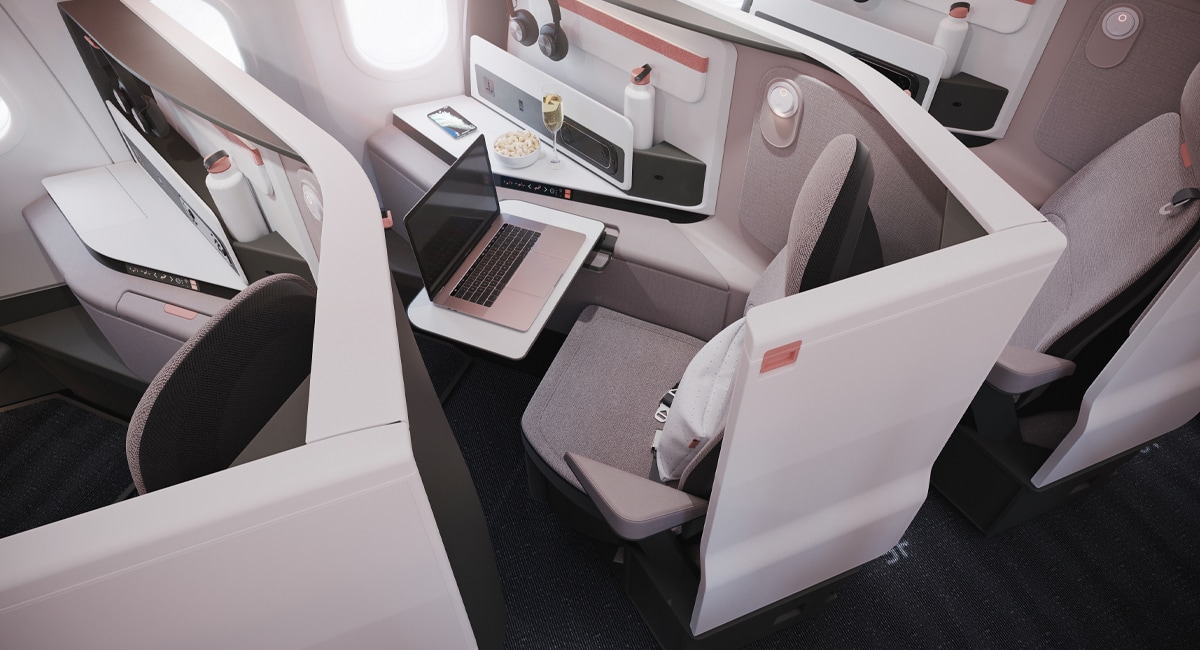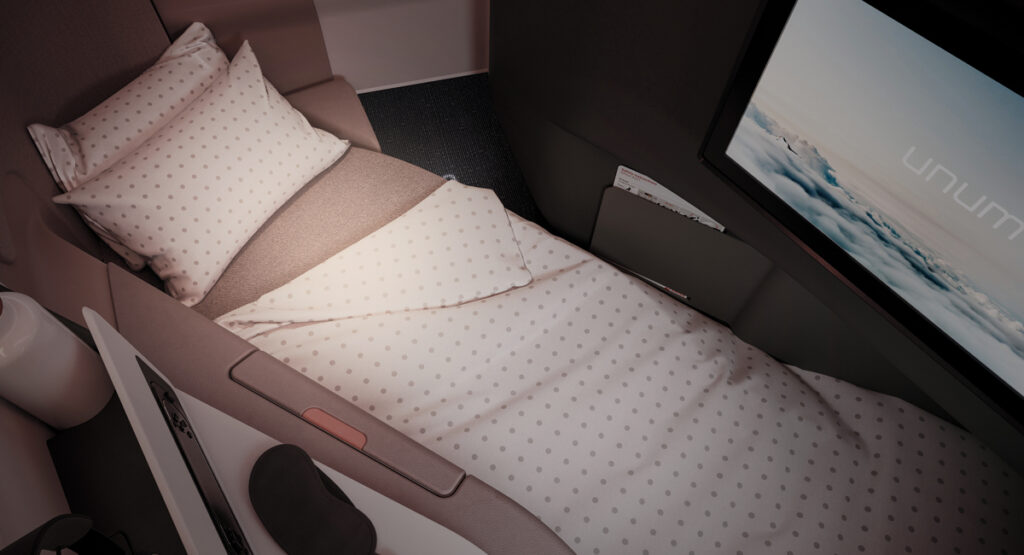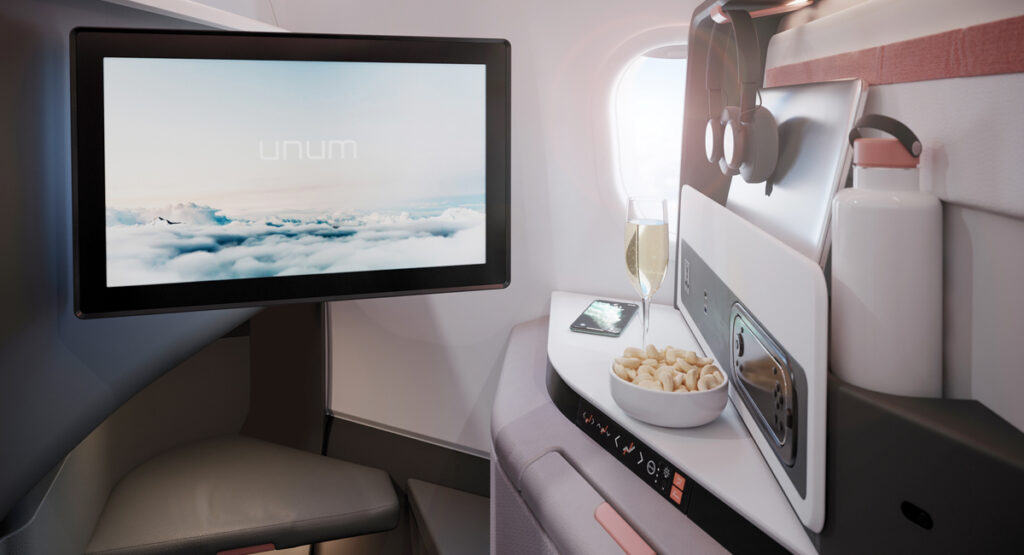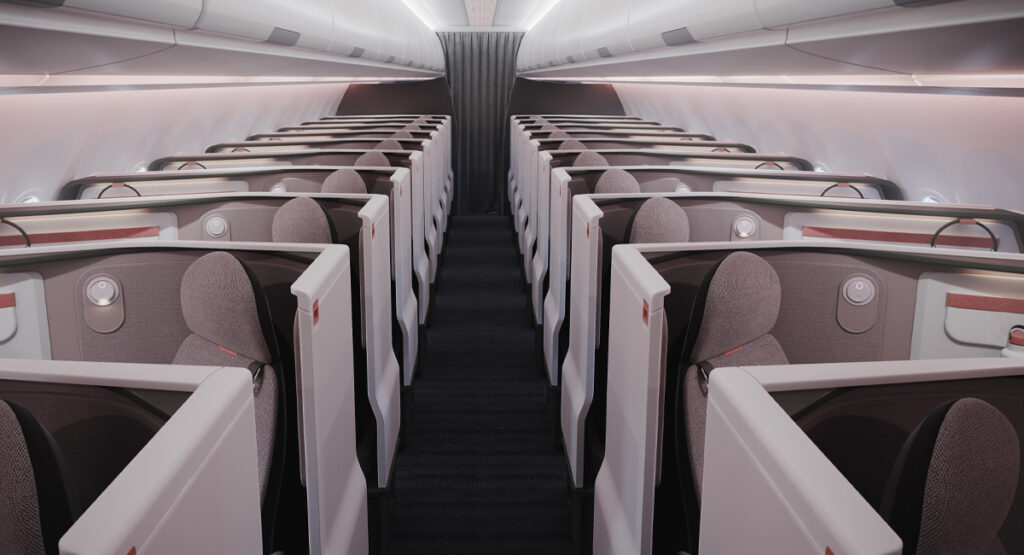The New Unum One Business-Class Seat Is Revolutionizing the Market
These accommodations take fully flat seats to the next level
by John Walton
August 22, 2022

Sometimes a business-class seat comes along that’s so different from what has come before that it resets the standard for passengers and airlines, like British Airways’ first fully flat business-class bed in 2000, or the Qatar Airways Qsuite with its first business-class doors in 2017. One of these refinements is from a new seatmaker, but with a team that has a serious pedigree. The company is Unum, the seat is Unum One, and it’s a fully flat seat—with doors—taken to the next level.

The seat in fully flat position / Photo: Courtesy of Unum
We’ve been following Unum since it was a twinkle in the eye of founder Chris Brady, an industry veteran formerly of Acro, which revolutionized the economy seat, and Virgin Atlantic, which introduced one of the world’s first premium economy seats. Unum’s uniqueness is a product of the company’s approach. “There’s nothing hanging from the ceiling. There are no mirrors,” Brady says. “Where there should be a seat, there’s a seat, and where there should be space, there’s space. Passengers will notice the difference the moment they try to get into the seat from the aisle. They’ll be surprised that they don’t have to shuffle across.” Brady calls it the “philosophy of seat design: It’s about comfort, robustness, maintainability, weight and price. Comfort is the most important, because we take the view of the passenger. For us, that’s about creating space, and giving passengers the choice to use the space as they see fit.”

Tilting screen / Photo: Courtesy of Unum
Unum decided to create the first version of the seat for the narrow-body market, specifically the Airbus A321neo, which is part of many U.S. airlines’ premium transcontinental plans, and the A321XLR, which is set to replace the Boeing 757 and expand the transatlantic market between the U.S. East Coast and Europe, as well as growing markets in South America. “The U.S. is the largest single market in the world,” Brady says, “and the transatlantic market between the U.S. and Europe is the largest international market in the world and the one that’s functioning best at the moment.” The narrow-body aircraft comes with particular challenges for business class, because—as paradoxical as it might sound—narrow-bodies offer a wider space for each business-class seat than a twin-aisle wide-body.

Cabin / Photo: Courtesy of Unum
If you think about it, on either side of the Airbus A320 or Boeing 737’s single aisle is six economy seats’ worth of room. The equivalent on the nine-abreast Airbus A350 or Boeing 787 is nine economy seats, split between four business seats. So the narrow-body is, for business-class seats, wider. Here’s where it gets a bit technical: Safety regulations for seats whose positioning exceeds a certain angle to the aircraft centerline require specific testing, and designing to meet these requirements is very complex.
Unum One is designed for this and is optimized for space, all the way down to the footwell area. On most other seats, these are enclosed next to the aircraft sidewall, losing inches of bed length that would be very welcome for passengers more than six feet tall. Unum’s is open by design, reclaiming this area for the passenger’s feet.
If Unum can offer airlines a space-efficient, ultra-comfortable option, it will change the market—and other seatmakers will have to respond with better and more comfortable seats, as well. Unum is currently pitching the seat to airlines, and if it’s successful, you’ll likely see it flying sometime in the next 18 to 36 months.



